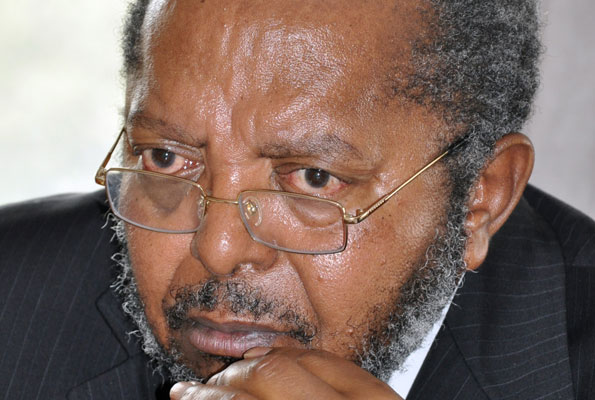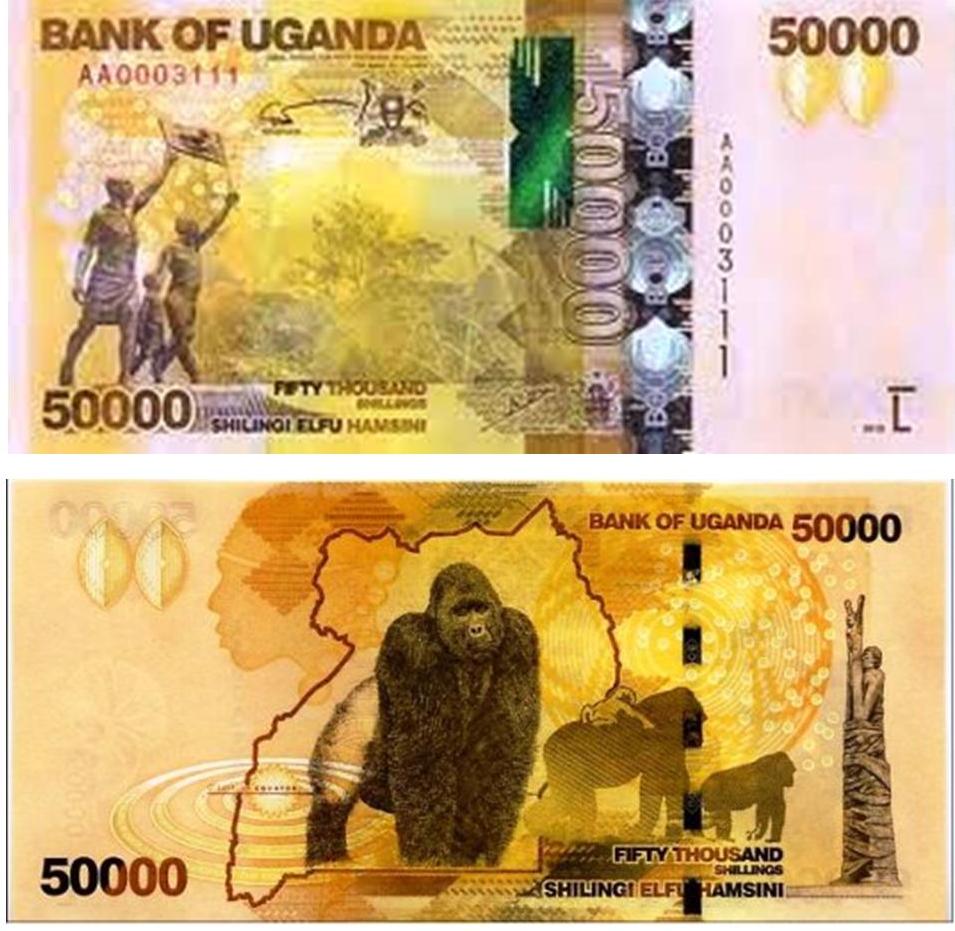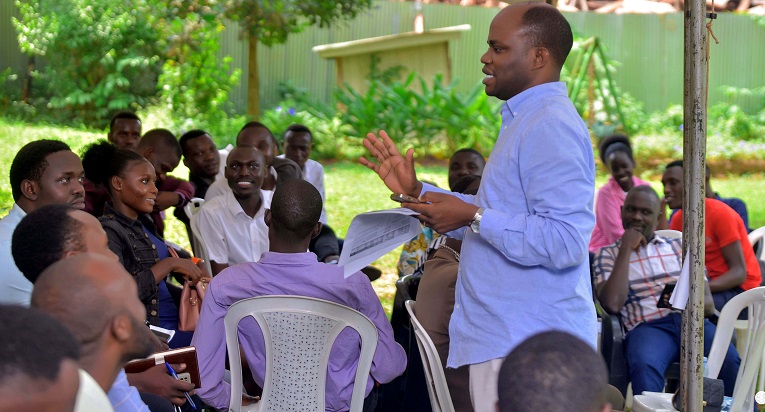The office of the Auditor General is carrying out a broad forensic audit into the operations of Bank of Uganda and is demanding accountability for Shs200 billion taxpayers’ money that was injected into Crane Bank before it was sold to Dfcu Bank. The AG is carrying out the audit on the instructions of Parliament’s Committee on Commissions, Statutory Authorities and State Enterprises (Cosase).
The decision to inject the money into Crane Bank was reached after cabinet warned that its collapse could torpedo the entire financial sector.
Auditor General John Muwanga’s expanded audit into BoU was as a result of petitions from former Crane Bank and Central Bank employees.
Former Crane Bank shareholders including tycoon Sudhir Ruparelia are seeking legal redress because of the way the bank was sold, without putting their interests into consideration, contrary to Financial Intelligence Authority regulations.
The Auditor General’s office has confirmed that the forensic audit into BoU is ongoing.
Part of the issues Cosase wants the Auditor General to look into is the cost of Crane Bank liquidation, assets management, hiring of external lawyers, liabilities and also the status of all the banks closed by the central bank.
During the forensic audit process, a number of techniques are used to collect evidence. One of the techniques used is to interview the suspect-in this case the Bank of Uganda headed by Prof. Emmanuel Tumusiime-Mutebile as Governor.
Former Executive Director Supervision Justine Bagyenda will also come under scrutiny for her role in the dubious collapse of the then 4th largest bank in terms of assets in Uganda.
Business Focus looks deeper into the controversial collapse and eventual sale of Crane Bank to dfcu and the potential tough questions the AG will task Mutebile and his colleagues to answer.
To What Extent Was Crane bank Undercapitalized?
Announcing the takeover of Crane Bank management on October 20, 2016, BoU Governor Prof. Emmanuel Tumusiime-Mutebile said Crane Bank was ‘significantly undercapitalized’, but didn’t reveal the extent to which it was.
Sudhir Ruparelia, one of the big shareholders and founder of the defunct bank is Uganda’s richest man and perhaps the 2nd richest in East Africa after Tanzania’s Mohammed Dewji. The question is; how could he fail to save his bank given that he is valued at over Shs3trn (according to Forbes).
It is reported that government sank in Shs200bn to save Crane bank, but this didn’t work out. It is clear that government would inject in money on the advice of BoU, so why did BoU allow government inject tax payer’s money in a ‘collapsing’ bank? Why didn’t the Shs200bn save Crane Bank?
The AG will task BoU to give accountability for the Shs200bn. The AG will also be keen to know whether government recovered this money while dfcu was acquiring Crane bank.
How could Crane Bank become ‘significantly undercapitalized’ in less than a year?
How could the bank all of a sudden make huge Non Performing Loans and eventually a loss without the watch of BoU? How did this arise without BoU noticing? It is important to note that although Crane bank made a loss in 2015, it indicated that it was well capitalized with over Shs200bn yet the minimum capital requirement required by BoU is Shs25bn.
Crane bank made a loss of Shs3.1bn in 2015, down from a net profit of Shs50.6bn in 2014.
This was a result of high Non-Performing Loans (NPLs) that increased by 122.9% in 2015. The bank’s NPLs increased to Shs142.3bn in 2015, up from Shs19.36bn in 2014.
It seems BoU itself is yet to understand why Crane bank collapsed. “There was a loss. So what do you do? Now you have to ascertain how this loss came up. In order to ascertain this, you carry out a forensic investigation because you want to know; why the loss, who caused the loss and what course of action should you take in case you find out whether there were people involved. The investigation will have numbers as well as legal implications,” Justine Bagyenda, the former Executive Director supervision at BoU, said at a press conference announcing dfcu’s takeover of Crane Bank.
Where was Bank of Uganda when Crane Bank was falling?
Announcing dfcu acquisition of Crane bank, Mutebile remarked thus; “Crane Bank’s liabilities, as at October 20, 2016, being the date of the takeover, grossly exceeded its assets and that it was insolvent, which insolvency has continued to date.”
Insolvency arises when a company lacks the financial capacity to meet its obligations. The question is; how did Crane Bank all of a sudden become insolvent without BoU noticing?
Where was BoU when Crane bank was collapsing? BoU is the regulator of banks and monitors them closely; so why did it fail to identify cracks in Crane bank earlier?
Sudhir had earlier indicated that he wanted to get another shareholder to inject more money in the bank. However, this didn’t happen as BoU took over the bank. Key questions the AG will be keen to ask are; did BoU make an effort to help Sudhir recapitalize the bank? Was the takeover hurried? At what point did BoU realize Crane Bank was collapsing/getting undercapitalized?
Why the Shs200bn for Crane Bank acquisition?
On February 27, 2017, dfcu acquired Crane Bank at a reported unbelievable fee of Shs200bn which didn’t reflect assets (of Crane Bank) that were valued at 1.3 trillion shillings.
BoU and dfcu refused to reveal the transaction costs involved in the latter’s acquisition of Crane bank. Reports indicate that the Shs200bn will be paid in a period of five years! This raises transparency and credibility questions. dfcu is a company listed on the stock exchange, so it wouldn’t do any harm for the company to disclose how much it acquired Crane bank.
Government had injected Shs200bn to save Crane Bank. How come dfcu paid the exact amount to acquire the bank?
Who were the other bidders for Crane Bank?
BoU revealed that dfcu beat off other 12 bidders to acquire Crane bank. However, the Central Bank refused to reveal the other competitors for reasons best known to them.
For transparency purposes, BoU would have made public the other bidders and properly explained why dfcu emerged winner. The AG will be interested to know why BoU zeroed on dfcu. He will try to find out whether there was corruption involved in Crane Bank’s takeover.
What was Sudhir’s role in the day today running of Crane Bank?
Sudhir, the founder of the defunct Crane bank has featured prominently in Crane Bank’s collapse. He was just a shareholder and deputy Chairman Board of Directors. Going by the shareholding structure, M/s White Sapphire who owned 47.33% stake in the bank, had more voting rights than Sudhir.
Joseph Biribonwa was Crane Bank chairman while P.K. Gupta was Acting Managing Director. In terms of hierarchy, Sudhir wasn’t the most powerful person at Crane bank.
However, he embodied Crane bank and vice versa.
BoU has also blamed Sudhir for Crane Bank’s collapse. The AG will be keen to ask BoU Sudhir’s role in the day today running of Crane bank. What was his involvement in the operations of Crane bank?
Who was behind White Saphire?
The ownership of defunct Crane bank has remained confusing just like its collapse. Sudhir and his Ruparelia family owned 48.7% stake in Crane Bank.
Under this shareholding structure, Sudhir Ruparelia owned 28.83% of the shares in the bank. His wife, Jyotsna Ruparelia owned 13.8% of the shares in the bank.
Sudhir’s three children; Sheena Ruparelia, Meera Ruparelia and Rajiv Ruparelia owned 1.99% shares each. Tom Mugenga, a renowned businessman in Kisoro and Kampala, owned 0.003% shares in Crane bank.
M/s White Sapphire owned 47.33% stake in the bank. However, in the whole process of Crane bank’s collapse and acquisition by dfcu, M/s White Sapphire, one of the majority shareholders in the defunct bank remained mysterious and unknown.
The real individual/s behind M/s White Sapphire has not come out in the whole process and remains unknown. BoU vets shareholders of banks, but it has also remained tight lipped about who M/s White Sapphire is. The AG will no doubt probe BoU about this.






